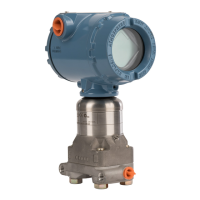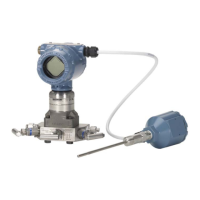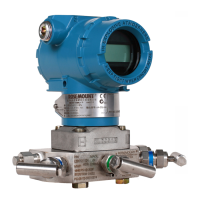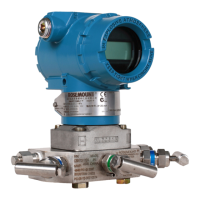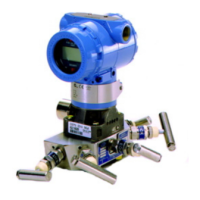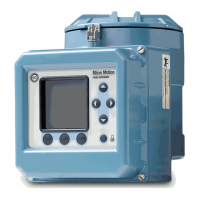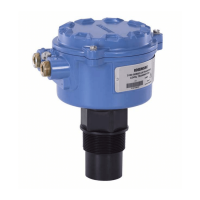11
Reference Manual
00809-0100-4853, Rev AB
Configuration
January 2017
Configuration
2.4.3 Differential pressure
The following configuration items are found in the Sensor Transducer Block.
Damping
The damping setting changes the response time of the transmitter; higher values can smooth variations
in output readings caused by rapid input changes. Determine the appropriate damping setting based on
the necessary response time, signal stability, and other requirements.
The setting for differential pressure damping also affects the mass flow.
2.4.4 Static pressure
The following configuration items are found in the Sensor Transducer Block.
Damping
The damping setting changes the response time of the transmitter; higher values can smooth variations
in output readings caused by rapid input changes. Determine the appropriate damping setting based on
the necessary response time, signal stability, and other requirements.
The setting for static pressure damping affects both absolute and gage pressure measurements.
Atmospheric offset
Both absolute and gage pressure are available as variables. The type of transmitter ordered will
determine which variable is measured. The transmitter will calculate either absolute or gage pressure
based on the user-defined atmospheric offset.
2.4.5 Process temperature
The following configuration items are found in the Sensor Transducer Block.
Damping
The damping setting changes the response time of the transmitter; higher values can smooth variations
in output readings caused by rapid input changes. Determine the appropriate damping setting based on
the necessary response time, signal stability, and other requirements.
Callendar-Van Dusen Coefficients
The Rosemount 3051SMV accepts Callendar-Van Dusen constants from a calibrated RTD schedule and
generates a special custom curve to match that specific sensor resistance vs. temperature performance.
Matching the specific sensor curve with the transmitter configuration enhances the temperature
measurement accuracy. Under Actions > Methods > Methods, the Callendar-Van Dusen constants R0, A, B,
and C can be viewed. If the Callendar-Van Dusen constants are known for the user’s specific Pt 100 RTD
sensor, the constants R0, A, B, and C may be edited by selecting the Callendar-Van Dusen Setup method
and following the on-screen prompts. The user may also view the α, β, and δ coefficients by selecting the
View Alpha, Beta, Delta button. The constants R0, α, β, and δ may be edited by selecting the Callendar-Van
Dusen Setup and following the on-screen prompts. To reset the transmitter to the IEC 751 Defaults, select
the Reset to IEC 751 Defaults method.
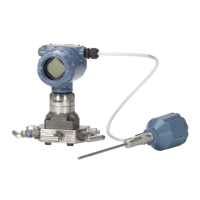
